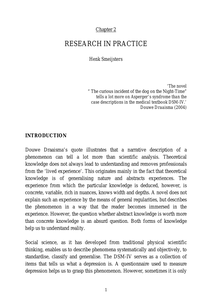Arts in Health, also known as Arts for Health, is an umbrella term used to describe the domain of using the arts to enhance our (mental) health and well-being. It involves a heterogeneous range of professionals who use the arts in various ways, with different goals and outcomes. The practices of these professionals can be placed on a continuum based on the variety of goals and outcomes, ranging from promoting social connection or well-being to treating (mental) health conditions. Recent discussions in the Netherlands have raised questions about the position of creative arts therapists on this continuum. This opinion paper addresses this issue by providing a brief overview of the development of the profession of creative arts therapists, the working areas of creative arts therapists and the growing evidence base of creative arts therapeutic interventions. The practices of creative arts therapists are positioned on the continuum, where the emphasis on and accountability for the clients’ (mental) health increases and evidence-informed use of the arts within a more clearly delineated and legally safeguarded professional framework are present. Knowing where the practices of creative arts therapists are placed can assist in identifying when to choose creative arts therapists, other professionals combining arts and healthcare, or a combination of professionals.
MULTIFILE

Empirical studies in the creative arts therapies (CATs; i.e., art therapy, dance/movement therapy, drama therapy, music therapy, psychodrama, and poetry/bibliotherapy) have grown rapidly in the last 10 years, documenting their positive impact on a wide range of psychological and physiological outcomes (e.g., stress, trauma, depression, anxiety, and pain). However, it remains unclear how and why the CATs have positive effects, and which therapeutic factors account for these changes. Research that specifically focuses on the therapeutic factors and/or mechanisms of change in CATs is only beginning to emerge. To gain more insight into how and why the CATs influence outcomes, we conducted a scoping review (Nstudies = 67) to pinpoint therapeutic factors specific to each CATs discipline, joint factors of CATs, and more generic common factors across all psychotherapy approaches. This review therefore provides an overview of empirical CATs studies dealing with therapeutic factors and/or mechanisms of change, and a detailed analysis of these therapeutic factors which are grouped into domains. A framework of 19 domains of CATs therapeutic factors is proposed, of which the three domains are composed solely of factors unique to the CATs: “embodiment,” “concretization,” and “symbolism and metaphors.” The terminology used in change process research is clarified, and the implications for future research, clinical practice, and CATs education are discussed.
DOCUMENT

The road to science for the arts therapies requires research on the full breadths of the spectrum, from systematic case studies to RCTs. It is important that arts therapists and arts therapeutic researchers reflect on the typical characteristics of each research paradigm, research type and research method and select what is appropriate with regard to the particular research question. Questions rather differ. Finding out whether a certain intervention has a particular effect with a large group of clients differs from wanting to know which change occurs at which moment by which interventions in the treatment of an individual client. Research in practice remains close to questions encountered by arts therapists in their daily practice. It concerns questions arts therapists have about their lived experience of acting due to the complexity and variability of practice. By carrying out research in practice that links up with those questions, evidence evolves; evidence that enables the professional to proceed and that makes explicit what often remains implicit and unsaid. What is explicit can be communicated, can be criticised and tested. The professional himself does the road to science of the profession. The investment in professionals’ research in practice is the motor of knowledge-productivity that bridges the theory-practice gap. Research in the arts therapies should lead to ‘knowledge’ in which the ‘art’, nor the ‘subject’ of therapist and client have been lost.
DOCUMENT
